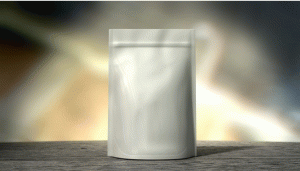As the second largest packaging segment in the United States, flexible packaging solutions account for 18% of the $145 billion American packaging market, according to the Flexible Packaging Association (FPA). Lighter weight flexible packaging includes films and laminates, which allow for the transport of higher volumes of product and less materials needed for production. This has been a revolutionary movement for brands to adopt to save on energy costs and reduce capital spent on materials.
On the manufacturing end of the production/consumption loop, flexible packaging makes sense because it has less of a negative impact on the environment than its rigid plastic bottle counterparts. It requires less material for production, generates less CO2 during transportation and taking up less space in the landfill.
According to the FPA, the flexible standup pouch product to package ratio is 35 times greater than that of glass bottles with metal caps and 21 times greater than the aluminum can. This allows for more product to be shipped using much less packaging. Included in the association's statistics is the fact that flexible packaging uses 50% less energy to produce and 60% less plastic than rigid bottles.
While sustainable packaging is a great talking point for the flexible packaging sector, there is still progress to be made to be entirely environmentally responsible. To any consumer, recycling plastics is the answer. CompleteRecycling.com states that recycling plastics uses 80% less energy than what it takes to create new plastic containers or bottles. But is recycling the only answer to environmental consciousness? Is it applicable to flexible packaging?
Flexible packaging recycling today
As it stands, there is no proper closed-loop system put in place to handle the recycling of flexible packaging, especially multi-layer high-barrier materials, specifically structures composed of aluminum foil within a polyethylene (PE) laminate. Mono-layered packaging is more easily recyclable because it doesn't contain the aluminum foil center. But the process to recycle multi-layered flexible PE packaging involves more steps than the traditional plastic recycling regimen by including separation of each layer. Each layer is then analyzed, identified and recycled individually to further process the plastic film into a recyclate resin.
Since a lot of flexible packaging is used for food products, another hurdle for recycling is food contamination. Due to food contamination in most flexible packaging going through the current recycling system, a very small percentage is actually reusable. The non-recycled polymers are sent into oxygen-free chambers for incineration, providing emissions-monitored energy to manufacturing plants.
There are great initiatives in the works from forward-thinking groups like the Flexible Packaging Association, who has a strong focus on sustainable packaging. The FPA is working with several producers for packaging that is safe for the environment. The Sustainable Plastic Coalition, the Association of Postconsumer Plastic Recyclers (APPR); and The Flexible Film Recycling Group(FFRG), are also promoting and increasing public education and outreach on plastic film recycling.
Cradle-to-cradle design is another initiative that organizations such as Enval are working toward. The philosophy of cradle-to-cradle design is to keep packaging products within the reusable system without downgrading or becoming 100% waste. Enval has found a way to fully recycle the aluminum foil between the layers of polymer laminate and keep it clean. Along with that, they can produce oils and gases from the plastic components, which can be used for electricity and heat. This is possible by using microwave-induced pyrolysis, which is not able to be done by incineration because of the inclusion of oxygen in the process.
Manufacturers are also moving toward the cradle-to-cradle concept by implementing the use of either eco-friendly materials that biodegrade, bio-based plastics that may also be biodegradable or techno-friendly materials that can be recycled without being down-cycled into low-grade materials. Using plant-based materials in flexible packaging would mean economic growth for agricultural industries. It would also push further agricultural development due to demand for crop growth.
Possible optimization of flex pack recycling
While Enval's process to completely recycle aluminum components and use pyrolysis for plastic components is currently the best solution for handling of multi-layered packaging waste, there is no solution to adequately recycle the plastic components into other plastic materials.
With pyrolysis, char residue formed from plastics contains inorganic materials, 80% liquid carbon and 20% carbon gas (CO2 gases are not created because of lack of oxygen in the chamber). The carbon can be transported to different locations for liquid fuel/energy needs. The ash can be used as ingredients in products such as concrete ready mixes. While the carbon can be used as fuel, companies tend to enter mixed waste materials into the pyrolysis chamber, producing fuel that may not have optimal usability.
What needs to continually be researched is an effective way to turn this carbon liquid fuel into a more serviceable, high-integrity energy source.
Developing more effective end-of-life processes (especially within pyrolysis) for flexible packaging; to have an even lesser impact on the environment is a challenging quest, but it is possible. With the innovations the flexible packaging sector has already made, like using bio-based material,or the waste-to-energy process of pyrolysis, the building blocks of further development have been set in place.

No comments:
Post a Comment